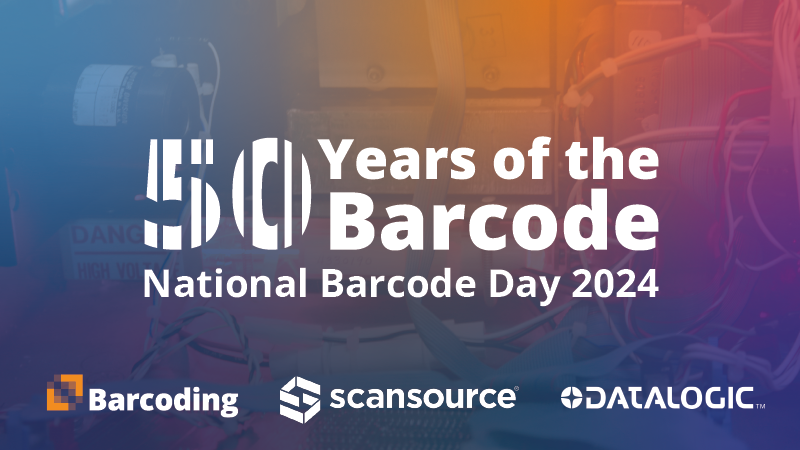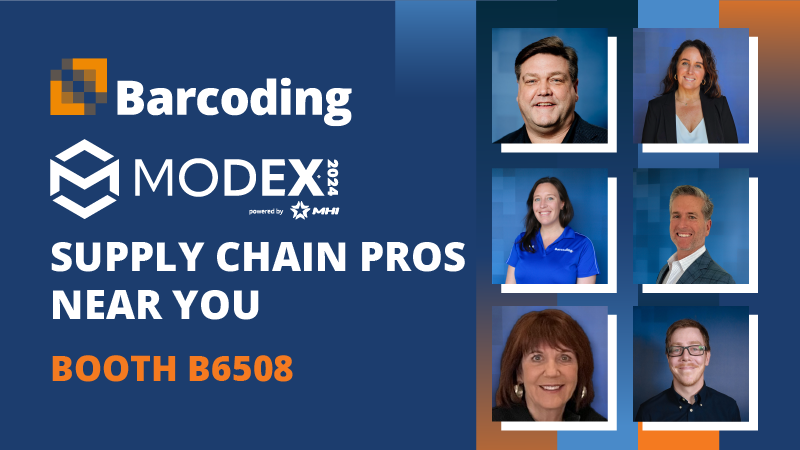Six billion—billion!—times every day, a GS1 UPC barcode is scanned somewhere in the world. These omnipresent codes are key to efficiency and accuracy in nearly every size and type of business, from agriculture, municipalities, and education to technology, healthcare, and retail. We’ve rounded up the 7 most common questions we get about UPC barcodes and answer them in this article.
Since we mentioned GS1 already, let’s have our first question be about that!
What is GS1?
GS1 is the nonprofit organization that develops the barcoding standards in use around the world. GS1 is the mostly widely used system of standards, giving companies the ability to identify, capture, and share information using a common language that connects systems and processes.
Manufacturers can purchase and license UPCs from GS1. As a licensing and standards organization, GS1 ensures each UPC is a unique identifier and assures interoperability between organizations.
All products need a unique identification number from GS1 to be able to sell them online or in stores. In fact, many giants of the retail supply chain require suppliers to affix UPC barcodes to items as a condition of doing business with them, including Amazon, eBay, Google, and Walmart.
What is a UPC Barcode?
A Universal Product Code (UPC), or UPC barcode, is a type of Global Trade Item Number (GTIN) that makes items trackable throughout the global supply chain. UPCs’ interoperability and standardization means that the UPC for an item doesn’t change, so any business can identify that item by scanning its barcode.
The UPC, a standardized 12-digit, numeric-only code, was originally developed to help grocery stores speed up the checkout process and track their inventory more efficiently; soon, this technology spread to other retail products.
Do you know what the first item ever scanned was? A 10-pack of Wrigley’s Juicy Fruit gum! Read more about the interesting history of the barcode.
What are the 12 Numbers in a UPC Barcode?
Barcodes can contain a wide variety and types of information. Some of the more common information includes the product identity, size, weight, manufacturer, information about the facility where the product was manufactured, as well as other data.
A typical UPC barcode’s 12 digits include:
- the GS1 Company Prefix which is the brand owners identification number assigned by GS1 (the first six to ten digits of the UPC number)
- an item number assigned by the brand owner (the next one to five digits)
- a check digit (the last digit)
Read more about the information contained in UPC barcodes.
Are UPC Barcodes Free?
Although there are many free resources available that make it possible to generate a barcode, the GS1 Company Prefix must be purchased from GS1.
As an alternative to dedicating your organizations time and resources working with GS1 to obtain your GS1 approved Global Trade Numbers such as a Company Prefix, GTIN, GLN, etc, Barcoding is a Certified Identification Partner (CIP) of GS1. This certification enables Barcoding to work directly with its customers and act on behalf of GS1 to support customers in these efforts.
It should be noted that ANY global trade barcodes which are obtained by other resources aside from GS1 or CIP partners like Barcoding, will be rejected in the market place when working with organizations like Amazon and other e-commerce business.
How Do I Get (and Start Using) a UPC Code?
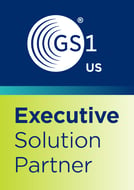 GS1 offers a 10-step guide to securing a UPC barcode; however, some of the steps are best executed by a partner like Barcoding with the expertise needed to accomplish it quickly and accurately.
GS1 offers a 10-step guide to securing a UPC barcode; however, some of the steps are best executed by a partner like Barcoding with the expertise needed to accomplish it quickly and accurately.
Here is a synopsis of GS1’s 10 steps:
Step 1. Get your company prefix. Every company using UPCs must obtain a company prefix (identification number) from GS1; this prefix will serve as the first six to ten digits of your barcode.
After receiving a GS1 company prefix, you can start assigning identification numbers to your products, company, locations, logistic units, individual company assets, returnable assets (pallets, kegs, tubs), and/or service relationships.
The last digit in a UPC barcode is derived from a formula based upon the previous 11 numbers. The formula is as follows:
- Add together all the digits in odd-numbered positions and multiply the sum by 3
- Add all of the digits in even-numbered positions
- Add the two sums together
- The check digit will be the number it would take to round to the nearest multiple of 10
Step 2. Once you’ve received your assigned GS1 Company Prefix, assigned all of your item numbers, and calculated the check digit, you’ll need the barcode image itself. After the appropriate information has been generated and purchased from GS1, you can use Barcoding’s free barcode generator to get the barcodes you need.
Step 3. Finally, once you’ve gotten all of your information and barcode images, you’ll need to print the barcodes on labels and affix them to your products. When printing barcode labels, there are several options for printing method and label material, each with its own purpose and benefits, so it’s best to get the guidance of an expert partner like Barcoding to help you select the right ones to ensure durability and readability.
You can read more about printing and labeling options in these content pieces:
One key consideration is whether your information is static or dynamic. If the information is static (always the same), the barcode can be printed using traditional printing methods directly onto the package or on a label that’s applied to the package. If the information is dynamic, either digital or a combination of digital and traditional printing will be required.
Steps 4, 5, and 6: Choose a barcode type, size, and placement. The specifications for barcode type, size, and placement all depend on where the barcode will be scanned:
- Barcodes scanned at the retail point-of-sale need to support omnidirectional scanning
- If the barcode will be scanned at point-of-sale AND in a warehouse, you’ll need a GTIN that’s also printed in a larger size to accommodate scanning in the distribution process
- Barcodes on healthcare items that will be scanned in hospitals and pharmacies don’t require omnidirectional scanning unless they’ll also scanned at retail point-of-sale
Step 7: Format the barcode text. The text beneath a barcode, called Human Readable Interpretation (HRI), is important because if the barcode is damaged or of poor quality, the text is used as a back-up. GS1 in its 10 Steps explains more about HRI here.
Steps 8 and 9: Pick a barcode color and placement. The optimum color for good contrast in a barcode symbol is black bars on a white background. If you’d like to use another color(s), and GS1 offers “do’s and don’ts” guidelines to ensure readability.
When determining placement, it’s best to first consult the packaging engineer to choose a location where the symbol won’t be obscured or damaged.
Step 10: Ensure ongoing barcode quality. GS1 General Specifications is a list of symbol-quality specifications that align with specific symbol type, application, and the GS1 identification key the symbol is carrying.
Do I Have to Use GS1 to Get My Barcode?
There are several benefits to securing your UPC barcode using GS1, and you can read about them here.
Does a UPC Tell the Item’s Price?
The item’s price is not data that’s encoded into the barcode. And there’s a good reason: What if the item’s price changes, or a retailer chooses to ignore the manufacturer’s suggested selling price and set their own?
When scanned, the barcode sends data to the register, and the register transmits the UPC data to a POS (point of sale) computer to look up the number and retrieve the price of the item at that moment. This way, each store can sell a manufacturer’s product for a price that they see fit, and allows for easy price adjustments.
Now that you know all about UPC barcodes, are you ready to learn how they can optimize the performance of your supply chain? Read our Guide to Warehouse Labeling!
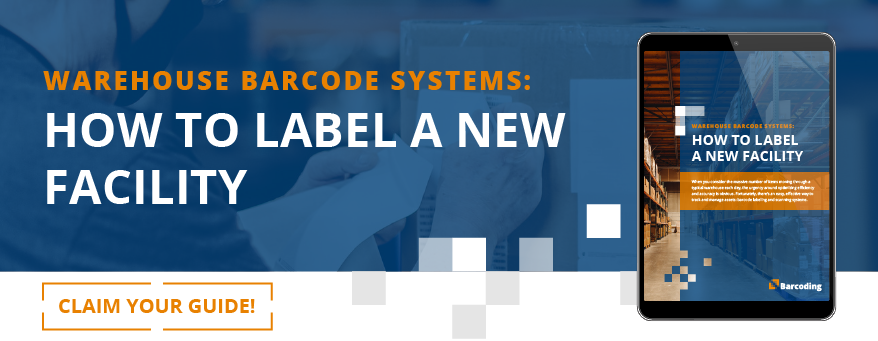

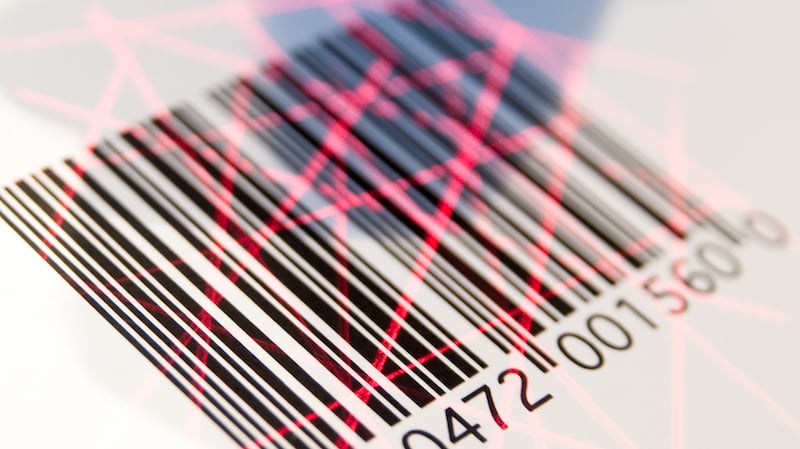
 GS1 offers a
GS1 offers a 

